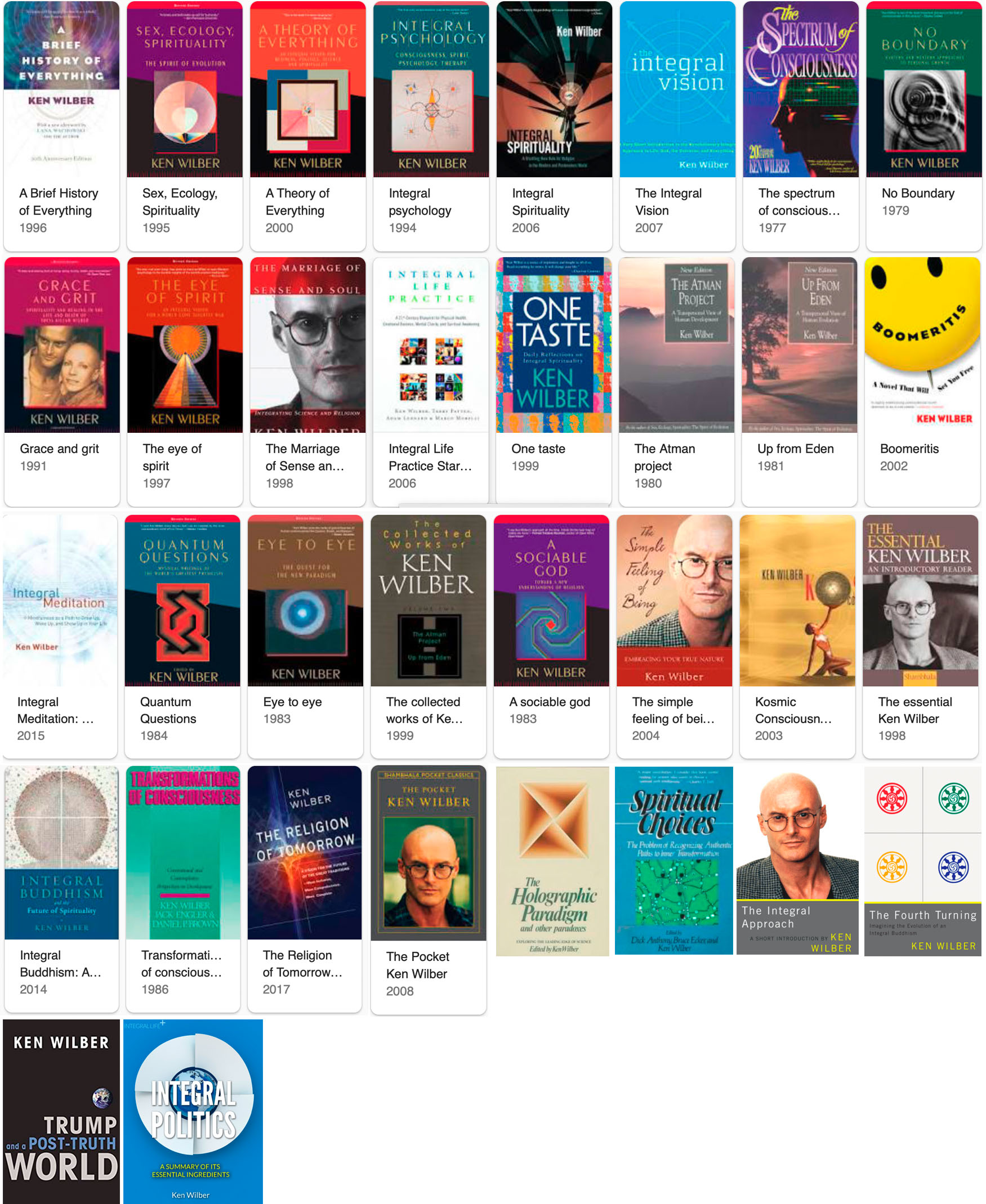
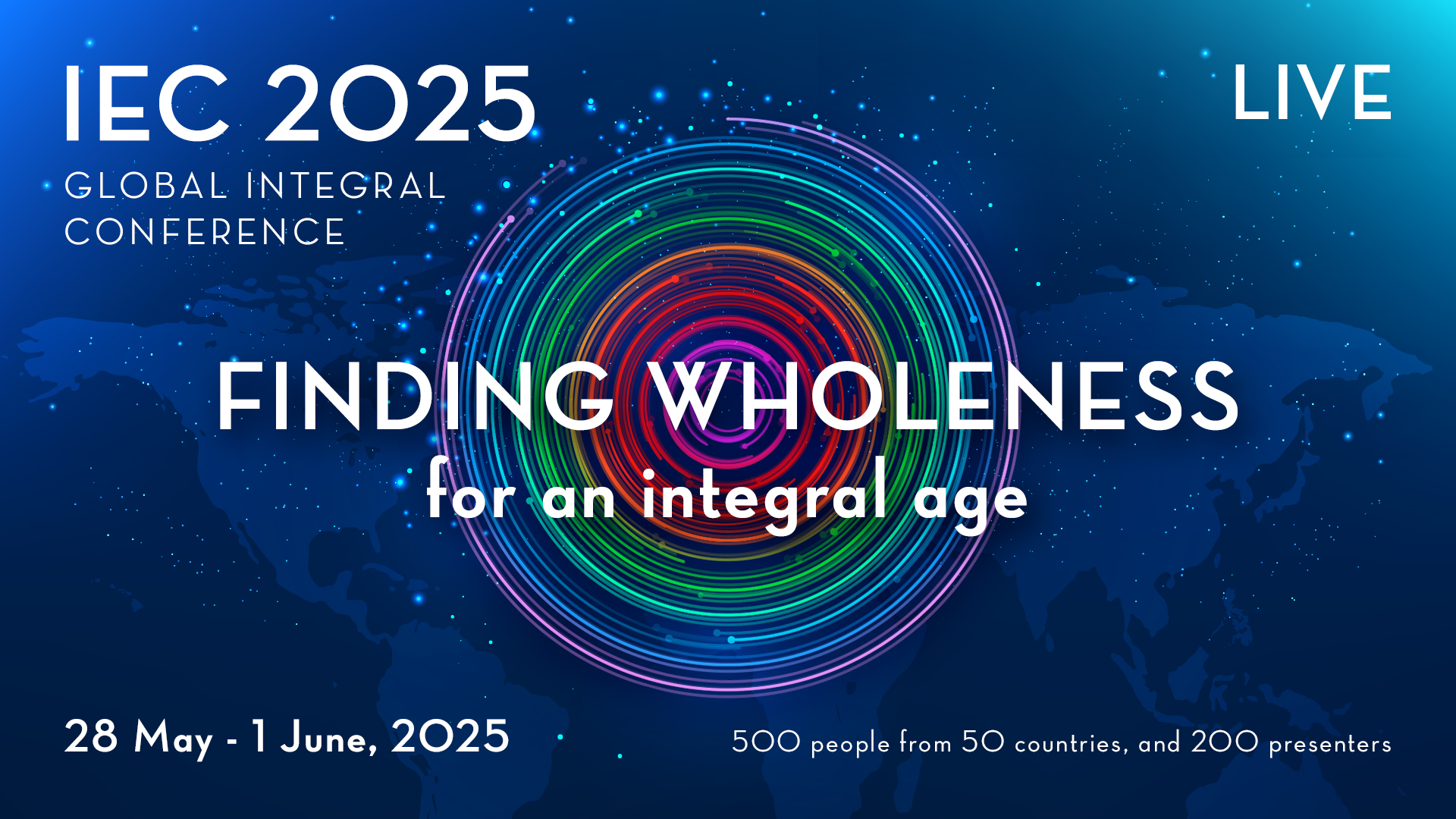
The word integral comes from Integral Theory, a contemporary leading edge approach from the field of consciousness studies, psychology, research supported spirituality, and social sciences. As a prime understanding framework for human behavior integral theory is also applied to organizations, leadership, business, ecology, and other areas of life. The founder of Integral Theory is contemporary American thinker and writer Ken Wilber who is often regarded as “the Einstein of consciousness” and some think his work is as much a game changer for the 21st century as Freud was for the 20th century in psychology or Einstein in physics.
What if we attempted to find the critically essential keys to human growth, based on the sum total of human knowledge now open to us?
What if we attempted, based on extensive cross-cultural study, to use all of the world’s great traditions to create a composite map, a comprehensive map, an all-inclusive or integral map that included the best elements from all of them?
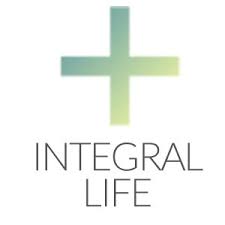
What is so special about Wilber’s integral approach, and what makes many people be interested in it in all continents is that it is a metatheory. That means that it is not merely a subjective theory of one person, but it integrates 100+ well established and time tested theories in the field of consciousness, psychology, meditative traditions, philosophy and sociology. Due to this wide integrative nature, it is the most inclusive, encompassing theory that we know of today, in other words the one that brings together the most number of players from the field and integrates it into a new, holistic and rationally based model of reality.
Integral theory has five major topics:
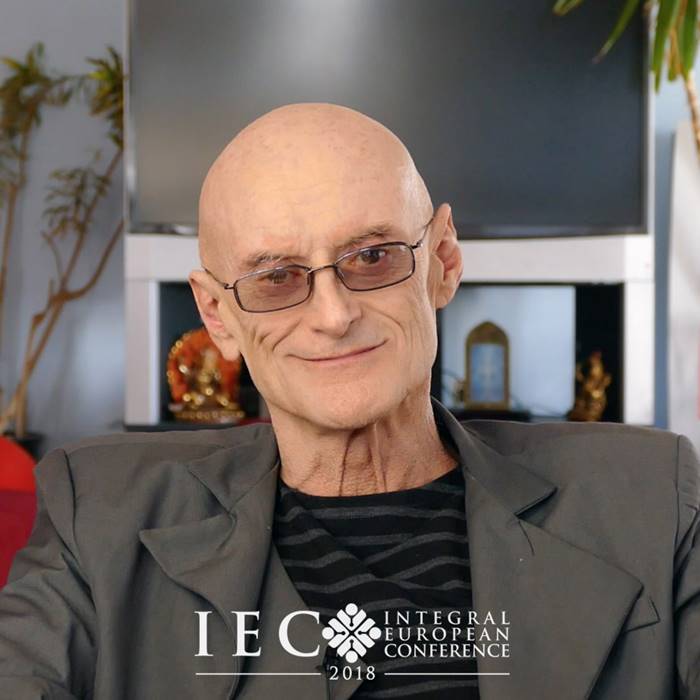
Ken Wilber – founder of Integral Theory
The most important part of Integral Theory is the stages of consciousness - structure and state stages - which describes the levels of personal development all the way from birth through childhood, up to adulthood and even beyond. Through the higher reaches of human nature till spiritual awakening and its refined stages. Finally we have it all in one system. All what psychology and the spiritual wisdom traditions have ever had to say about development. For the first time bringing these together and integrating, finally we have a universal map in our hands and we don't have to be partial, split and take sides. Inside of humans, it is all one. And in the outside world:
We as psychologist, coaches, shamans, yogis, doctors, scientists, business leaders, tech people, politicians and change makers, finally we can stand united, and work together more successfully.
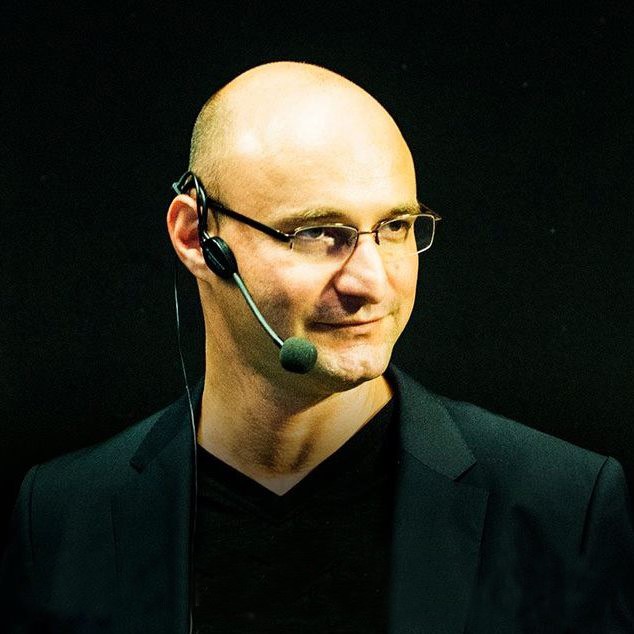

STAGES OF DEVELOPMENT / INTERNAL VIEW. What we find on stages of development in a person. The “psychology of stages”.
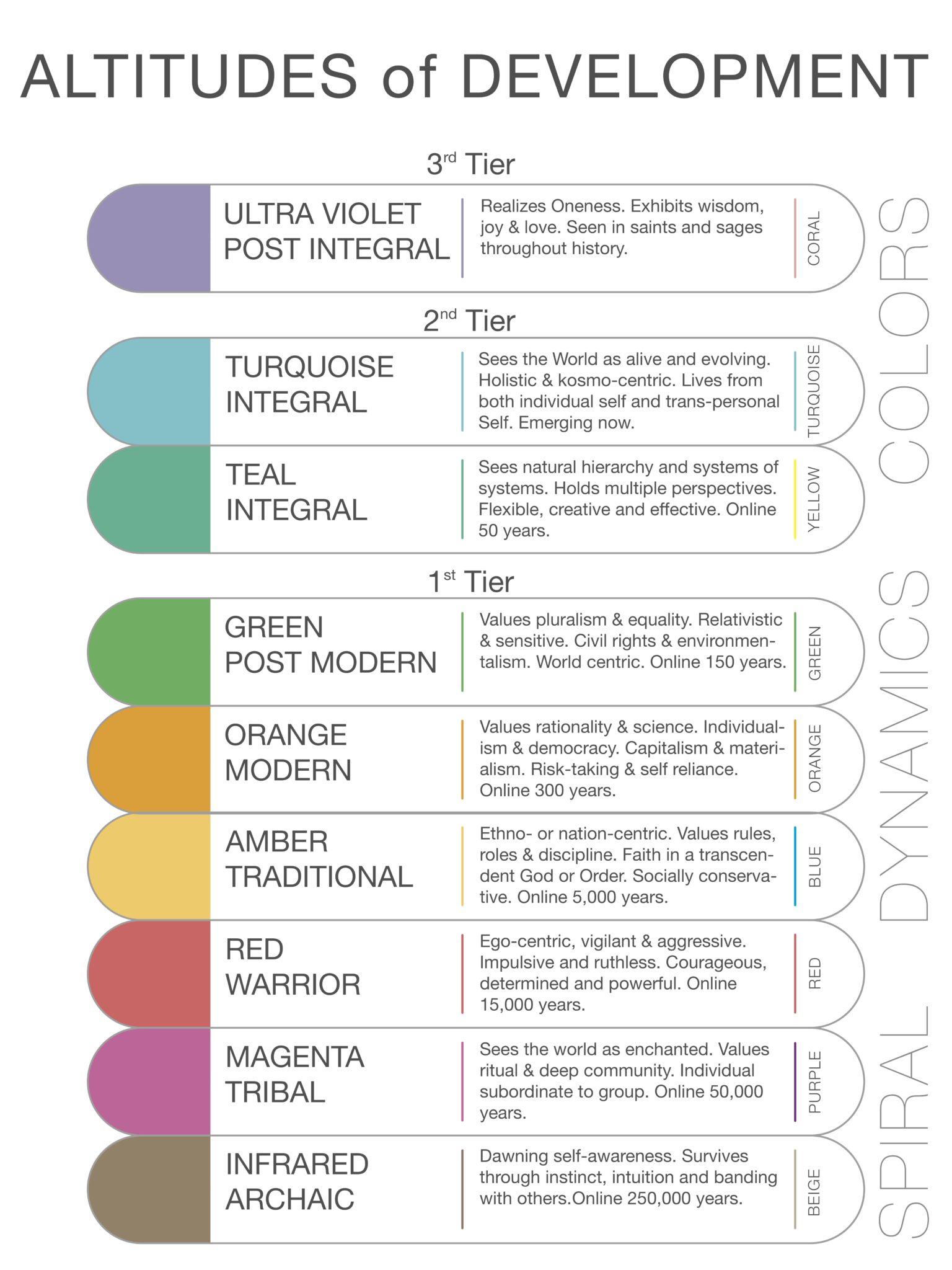
STAGES OF DEVELOPMENT / EXTERNAL VIEW. What we find on stages of development in cultures and societies. The “sociology of stages”
The basis of Ken Wilber’s stage description is bringing together all the known stage theorists of psychology at one side and drawing on the meditative stage descriptions of the spiritual traditions on the other side. We are talking about more than a hundred models that are meticulously matched and the universal scheme of human development is distilled. For an exact viewing of what are these 100+ models and how exactly they match, check the charts at the back of the book: Ken Wilber (2000): Integral Psychology. On the charts above you get a basic description of the stages. A full study of the stages takes more than a year at Integral Academy Hungary in its 3 year training program. There is a lot of knowledge, research, information and practical experience of these stages in the integral world both form psychologist, therapist, researchers, organizational development experts, coaches, etc. Study the charts above and try to memorize the stages. Psychological development starts start before birth as perinatal psychology and Stanislav Grof’s work shows, a stage we call Level 0.
It continues after the physical birth and from age 0 to 1 we have the Wilber 1 (w1) level also called infrared. Followed by the mother-child relationship on w2 magenta between ages 1 to 3, the psychodynamic playful and stormy, pre-operational level w3 red between ages 3 to 7 years old. Then when the mental control wins over the impulsive self, 4th stage emerges, the amber concrete operational rule-role mind between ages 6 to 12; followed by the formal operational orange self from age 12. that brings an independent rational thinking. From this point on development is not strictly age bound. Still experience shows that for a genuine post-conventional, post-modern, emphatic green self we need some adult maturity. We earliest suggest it’s arising in the mid 20es, or even later. Even further development are the teal, turquoise and higher stages. Another way to describe development from top bottom to top is the increasing capacity of perspective taking that goes with increasing empathy and social skills, from the early egocentric w3 stage to the late kosmoscentric one as shown in the chart bellow.
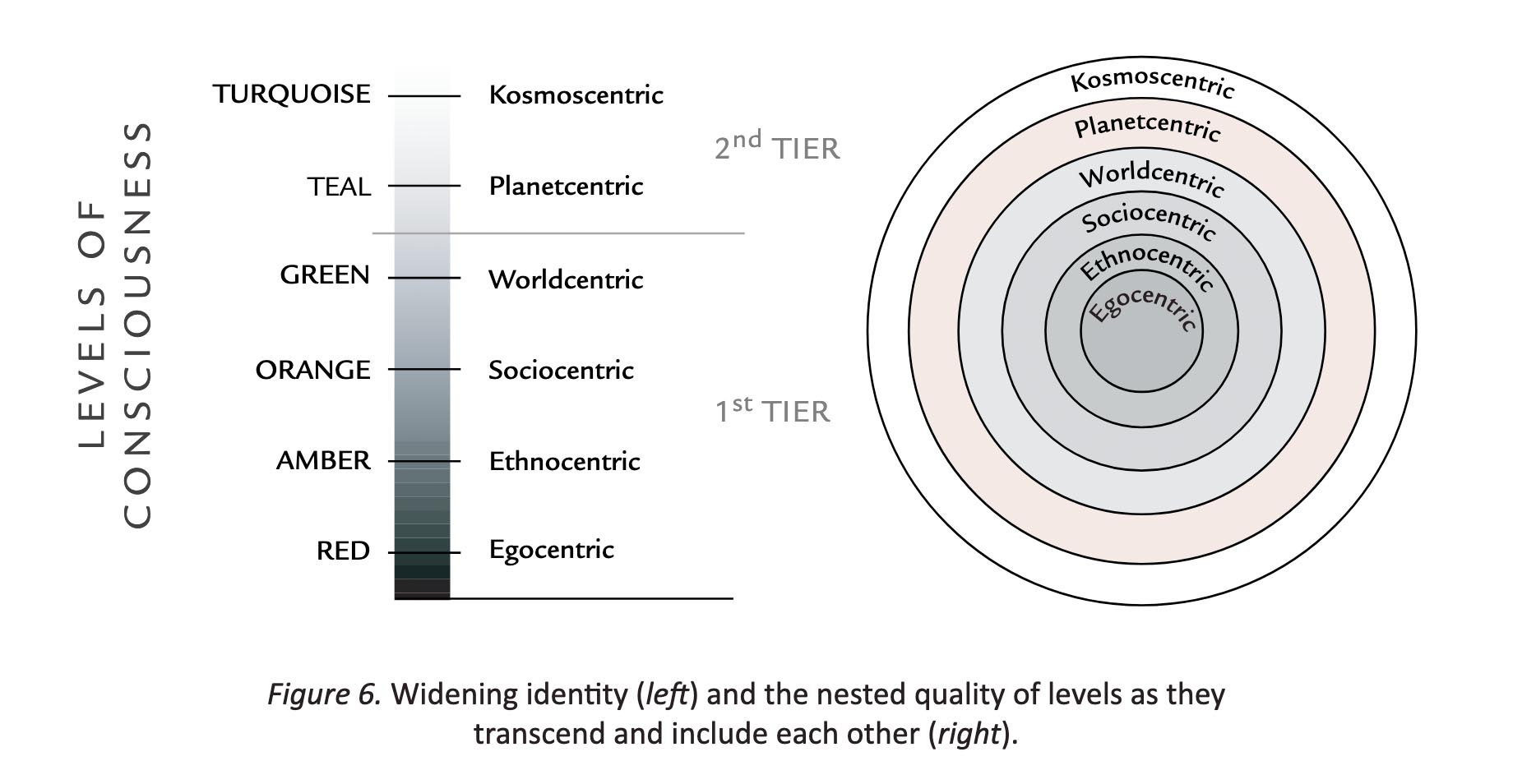
has attempted to build full-spectrum theories of human development which follow development from birth through conventional and postconventional stages into the postsymbolic realm and into stages of higher consciousness. - in: (1995) Comprehensive Language Awareness:
A Definition Of The Phenomenon And A Review Of Its Treatment In The Postformal Adult Development Literature

In the chart bellow you see the same stages of development (in another resolution), shown in the collective interiors: the world views. How we see the word from different stages, and what are some of the main values there. These stages and world views have developed over a long period of history and today we find them side by side. Sometimes they are at peace with each other and sometimes they cause clashes or ‘culture wars’. They also define political orientations, decisions making and policies.
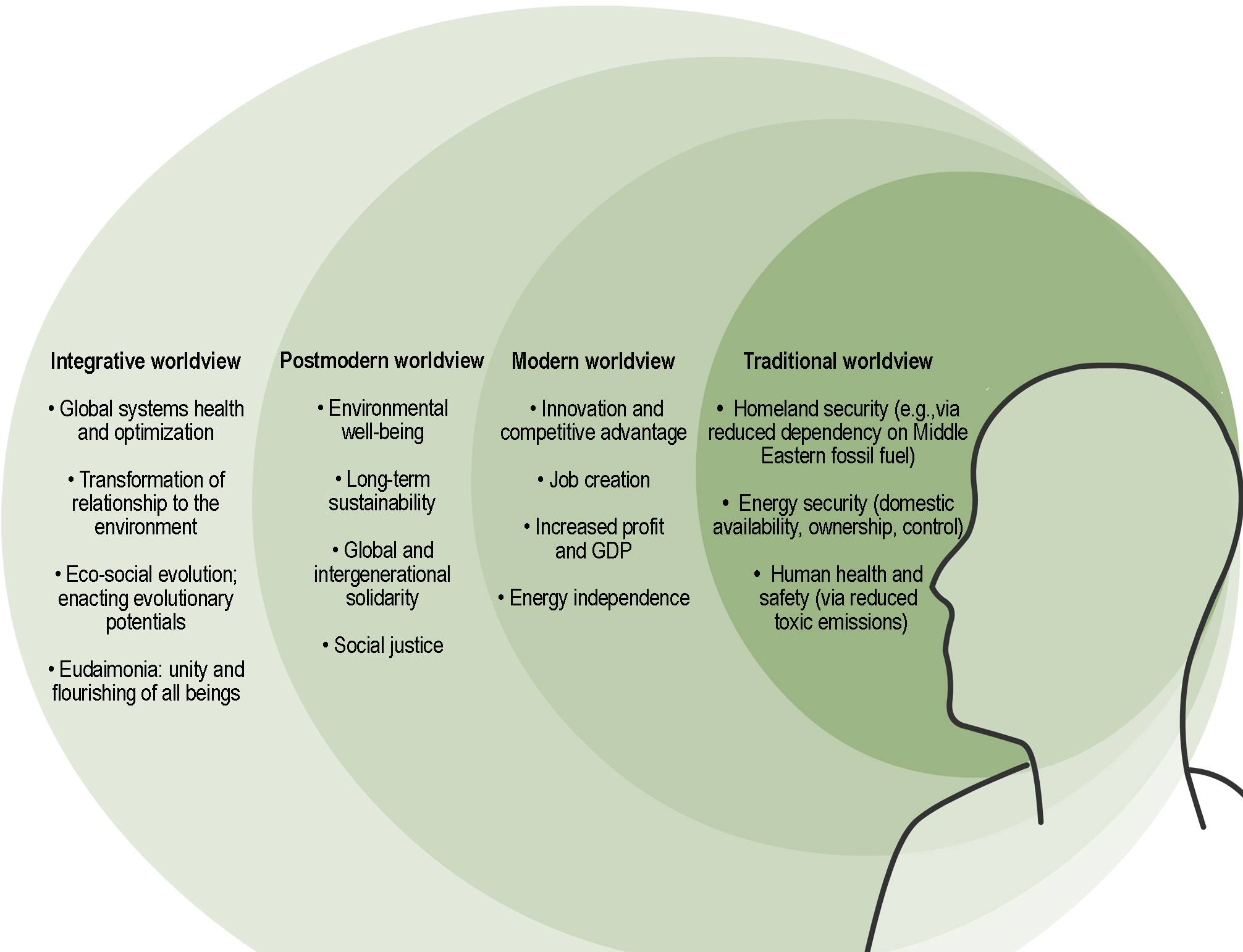
At the integrative – or integral – stage there is an important watershed or “momentous leap” – as research psychologist professor Dr.Clare Graves, the mastermind behind another developmental theory called Spiral Dynamics called it. At the integrative stage the person not only represents the values of that stage, but for the first time in history is able to see through, understand, and accept all the previous stages of development: the post-modern, modern and premodern. Also this stage is able to systemically organize the great complexity of including in the game, and weaving together all these stages. Usually the post-modern, modern and premodern stages see themselves as mutually exclusive and would like to see rather the whole world, as itself. We believe that in major questions like the future of the EU, managing different cultures in Europe, the US and Americas, Middle East, Asia, Africa, Australia – we need an integral stage of consciousness to go beyond culture wars and harmonize these approaches in a multicolored, multi stage, well-managed unity.
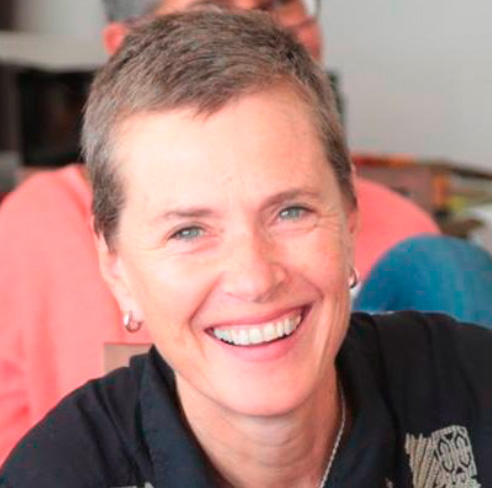
When it comes to spiritual experiences, e.g. meditative states, peak- and mystical experiences integral theory is also accepting and inclusive. There is just too much evidence of their existence if we compare the experiential maps of spiritual traditions like Yoga, Buddhism, Christian Mysticism, Kabbalah, Sufism, Native Shamanic traditions – to name a few – we see recurring accounts of certain experiences all around the globe for ages. Today many people report such experiences, whether it comes from a meditation practice, extraordinary crisis situations, mind altering substances, spontaneous awakenings or near death experiences. Also there are thousands of meditation researchers from neuroscience and psychology from the last four decades.


We have seen an acceleration of these experiences in the last decades and we need a world that understands, accepts and uses them. We need to integrate spiritual experiences as a base of wisdom and compassion and source of creativity for worldly matters such as business, politics, ecology, or even technology. On the other hand we have to differentiate these non-ordinary experiences from mental disorders and psychotic states with well informed discernment based on integral psychology. Not only Eastern saints and gurus like the Dalai Lama or Ramana Maharishi have those experiences but also practical scientist and tech gurus of the West too, like Steve Jobs behind Macintosh, iPhone and Apple; or Albert Einstein. They also had such peak experiences that played a major role in developing their contributions to humanity.
When it comes to the stages of development, Integral Theory differentiates between the slowly evolving but stable structure stages – shown on the charts above-, and the quickly accessible but also often volatile state-stages. In other words it takes usually years to grow through stages of personality, and if someone reached a stage he or she spends usually a whole phase of life there. Just think of a traditionalist person (amber altitude in the integral model) or a modernist (orange stage). They can debate for years around the family dinner table. Those stages with their worldview stick around for quite some time and need time to change. On the other hand, anyone form those stages can have peak experiences of spiritual states, relatively quickly. Within minutes, hours or days, depending on the practice and capacity of the person both a traditionalist or a modernist, or a post-modern or integral person can all have non-ordinary states of consciousness. The so called Wilber-Combs lattice chart shows this difference between these, and describes the structure-stages (vertical axes) and the state-stages (horizontal axes). By comparing the deep structure of the different experiences described in all the great spiritual traditions Wilber found that states of consciousness also go through progressively deepening (or opening, awakening) stages and there are 4 of these universal state-stages: the psychic (or gross), subtle, causal, and non-dual.
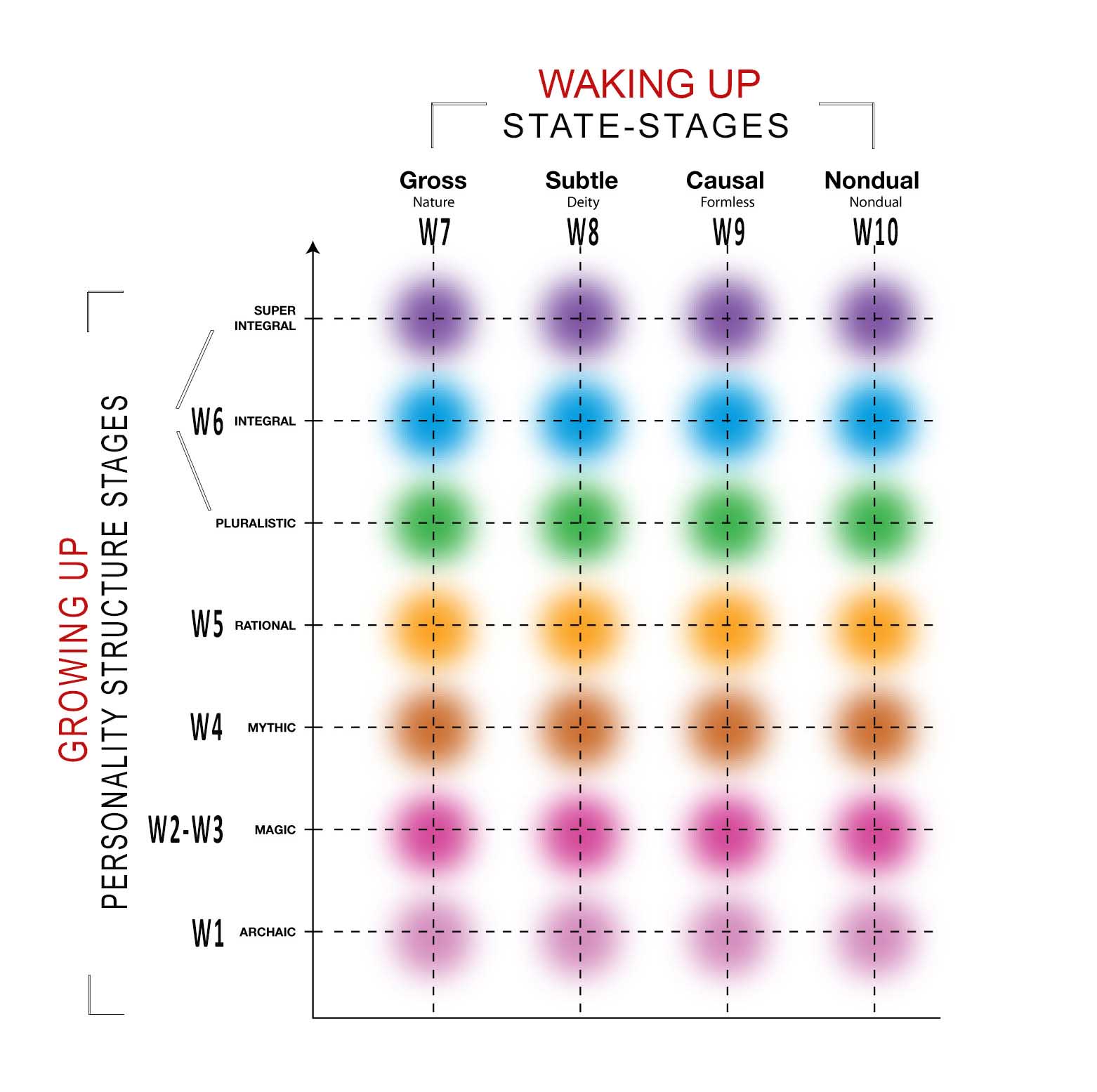
The process of development through the structure stages is called growing up and usually called personality development in psychology. The experience what one has on the state-stages is called waking up and known by the spiritual traditions. Growing up and waking up are two often used expressions in the integral community. Wilber maintains that a truly encompassing integral approach has to have at least these two major factors of human development included. He also points out – which is really stunning if you think of it -, that so far in human history these two has never been put together. In the Eastern meditative traditions it is all about waking up, and they don’t know all of that knowledge of growing up what psychology of the West has. In other words they are blind to it. No wonder why: in your meditation you never experience or see your stages of personality development. You know that from other sources, mostly by reflexive human relationships that have this knowledge: that is psychotherapy, even if you are not crazy but you do it for positive personal growth. You need precisely that practice and not meditation to grow up in your personality and realize your potentials. Also Western psychology is expert in the structure-stages and that is the source of knowledge if we want to study that, but spiritual experiences and waking up has never been discussed in psychology. As if they were non existent. Psychology has been blind to that, before Jung, the transpersonal psychology and integral psychology has brought in the subject. In Integral Theory we have stages of personality development and spiritual state-stages together finally, for the first time integrated.
“These particular types of developmental stages are a modern discovery, part of the new complexity that evolution brought with the modern era. Of course, we find stages in meditation, stages that are 1st-person, or direct state experiences (a term I’ll explain in a moment), and these were clearly mapped out by the great contemplative traditions East and West (for example, St. Teresa’s seven mansions, the ten ox-herding pictures of Zen, the stages of Early Buddhism so clearly systematized by Buddhaghosa, the stages outlined by St. John of the Cross, the six major stages of Mahamudra, and so on). But the more recently discovered developmental stages, which are stages of structure development (a term that I’ll also elucidate momentarily) discovered by modern researchers such as Piaget, Baldwin, Kohlberg, Gebser, Graves, Loevinger, Maslow, and so on, can’t be seen by introspecting, as 1st-person meditative state-stages can be, because they are 3rd-person structure-stages discovered by studying large groups of people over long periods of time under experimental conditions, and then drawing conclusions about the mental patterns involved—something you can’t see merely by “looking within.” This is why states, such as the waking state, or the dream state, or states of joy, happiness, sadness, anxiety, fear, perhaps a sense of oneness with nature, and so on, which can indeed be seen simply by looking within, were discovered by the earliest shamans, explorers of interior states, at least fifty thousand years ago, whereas James Mark Baldwin gave the first description of a structure a mere one hundred years ago. Structures are much harder to detect (they are, recall, like rules of grammar), and are thus found nowhere in any meditative system the world over. Most meditative systems are at least a thousand years old, and since structures were first discovered only one hundred years ago, no meditation school had time to include them—until now, that is.” – Ken Wilber (2017): The Religion of Tomorrow, pg. 52.
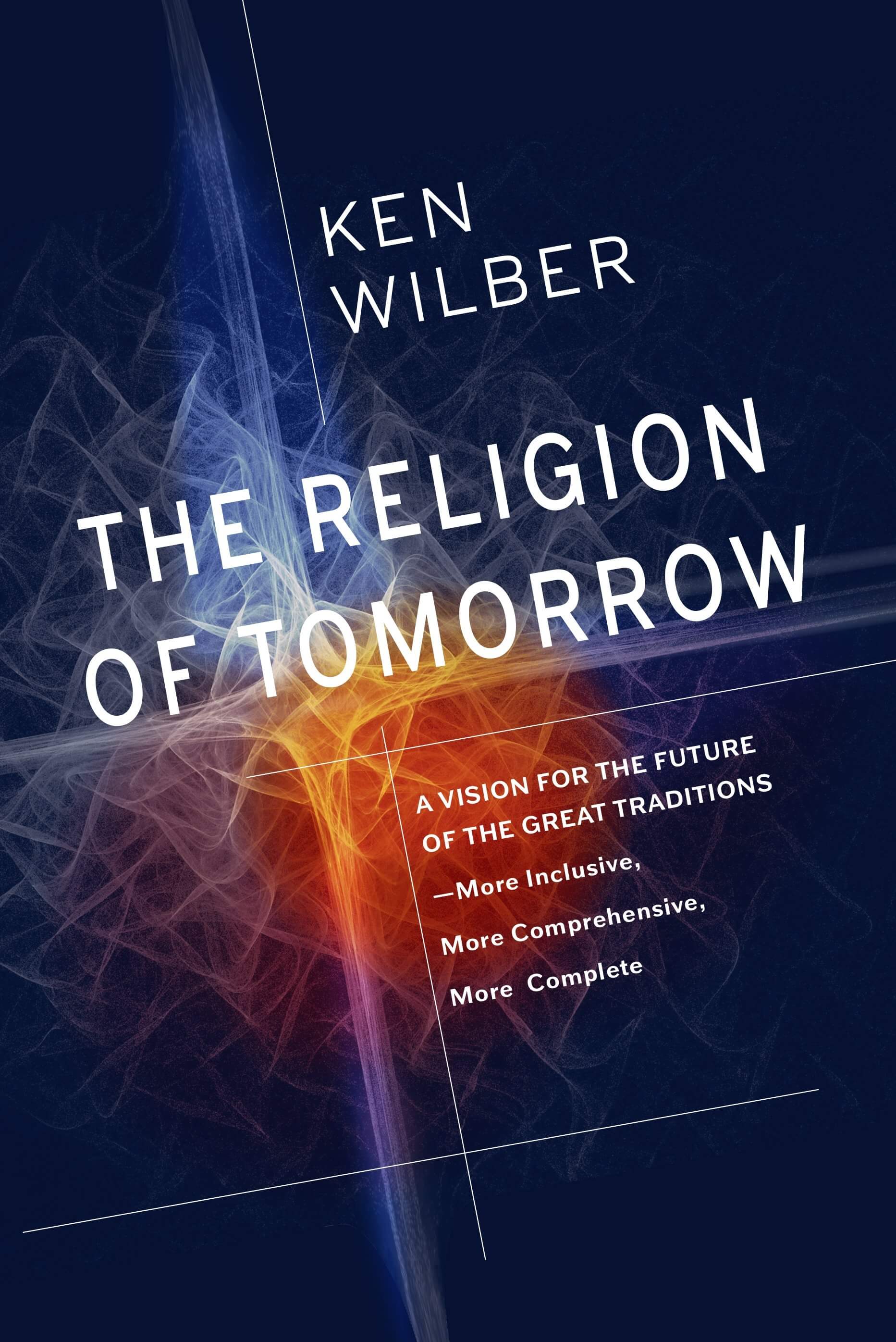
The other main topic in Wilber’s Integral Theory that is widely known and used is the four quadrants model. It divides all sciences and approaches to knowledge to four quadrants by a very smart 2×2 matrix. Note on the four quadrant chart, that there is a left side and the right side. Also an upper side and a lower side.
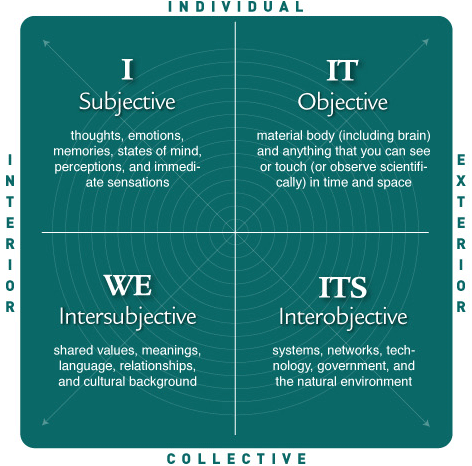
The left side (everything from the vertical middle line to the left) represents the INTERIORS. The interior, subjective realities like your thoughts or your relationship with your partner. These interior things can not be seen, or tracked by any equipment, but can be known by listening to what you tell us about it. In other words by sharing the interiors with words or through art. You can honestly tell what’s going on or also express it through a poem, painting, dancing or musical instrument.
RIGHT SIDE: The exterior, objective world
The right side (everything from the vertical middle line to the right) represents the EXTERIORS. The exterior, objective realities like your brain activity or your neighborhood that you live in. These are pretty different things, one belonging to neurology and medicine, the other to sociology, architecture or politics. Still the common in them is, that they deal with external realities. These exteriors can be seen with our eyes (look around on the street) or tracked with equipments (EEG), and we don’t have to listen to you, we just need to observe it.
The upper part (everything up from the horizontal middle line) represents the INDIVIDUAL phenomena. Your thoughts and your brain activity are individual phenomena.
The lower part (everything bellow the horizontal middle line) represents the COLLECTIVE phenomena. Your relationship life and the neighborhood you live in has in common that they represent realities that you share with others, collective realms in which you are in relation to others and the focus are on these collective realities.
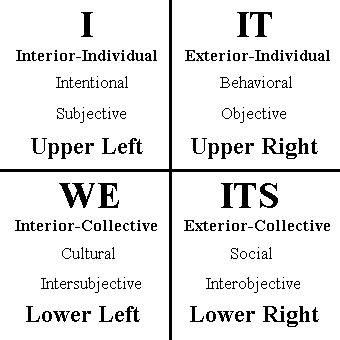
Upper LEFT: Psychology, psychotherapy, personal growth, coaching, spirituality is typical here. Freud, Piaget, Maslow, Buddha, Christ and Tony Robbins to name a few.
Upper RIGHT: Medical sciences, neuroscience, behaviorism, natural sciences, physics, biology, chemistry are typical here. Hippocrates, Schweitzer, Newton, Einstein, Curie, Attenborough are some pioneers here.
Lower LEFT: Cultural sciences, ethnography, cultural anthropology, family therapy, family and systems constellations, gender studies, linguistics, etc. are typical here. Malinowsky, Mead, Heyerdahl, Satir, Hellinger, Chomsky are some pioneers here.
Lower RIGHT: Societal sciences, systems theories, sociology, economy, finances, political sciences, ecology, Gaia theory, etc. are typical here. Marx, Lensky, Hume, Habermas, Lovelock, etc. are some pioneers here.
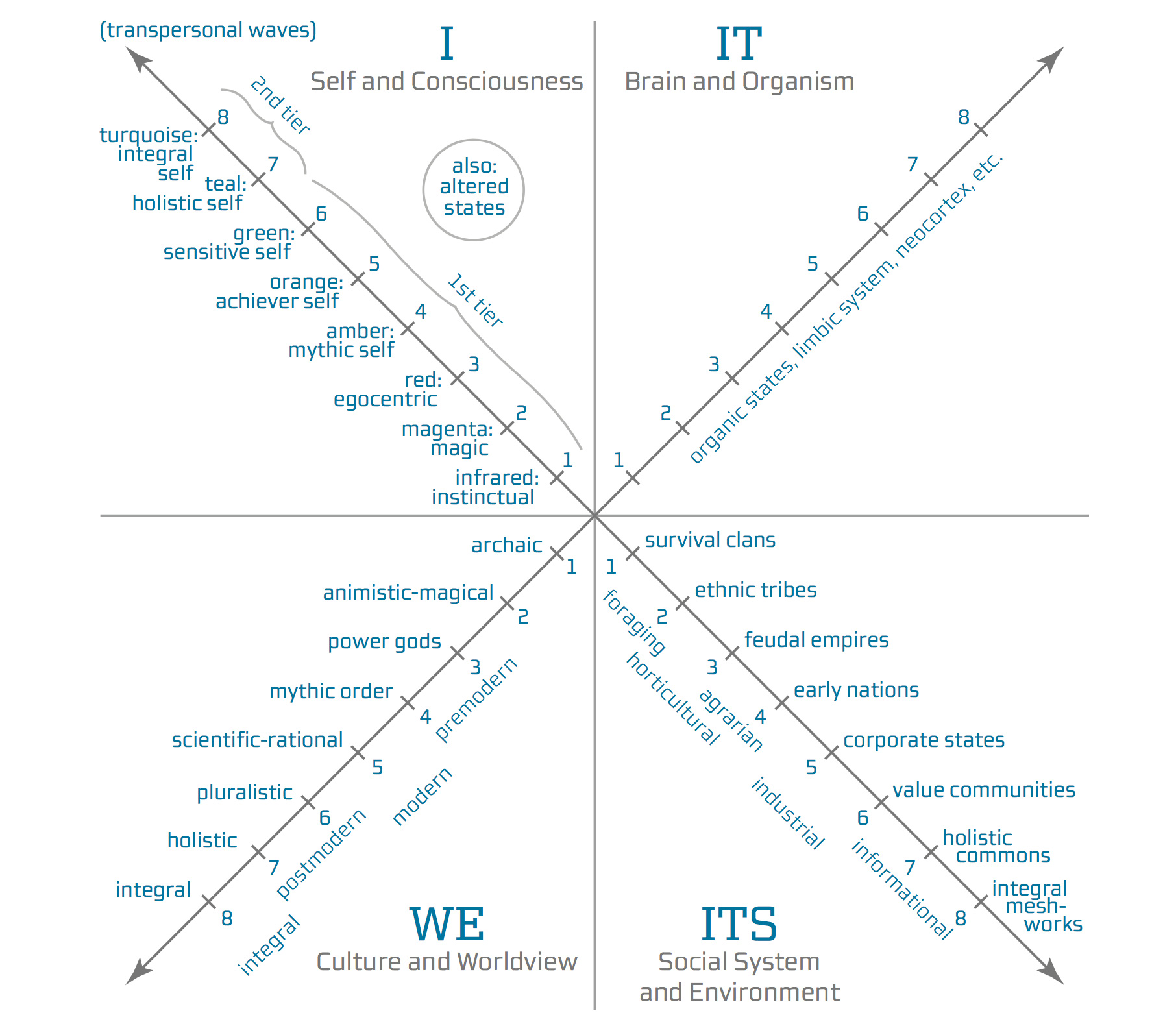
Notice how a number rang on the ladder in one quadrant corresponds the same numbered stage in another quadrant and also how individual psychology (upper left), world views and political orientation (lower left) and societal systems (lower right) come together. For example number 5 in the upper left quadrant is the modern, independent, self authoring, modern rational self, that we mark with orange color. The orange stage. This developmental stage in evolution has a scientific-rational worldview, which you can see on the lower-left quadrant’s stage 5. This very same stage produces corporate states as have been the case worldwide when the Western enlightenment replaced middle age feudal empires; or in case of colonizing orange nations’ activity in other parts of the world like the Britts in India for example. All modern nation states came to life when orange appeared.
After reading more than 300 books on feminism, 300 on ecology, and more than another 400 on various topics such as anthropology, evolution and philosophy, Wilber offers Sex, Ecology, Spirituality: The Spirit of Evolution, a massive 800-page work which is volume one of a planned three volume series. At this stage Wilber has laid the conceptual groundwork for tracing development and evolution, especially human evolution, across all four quadrants. - An overview of Ken Wilber's book Sex, Ecology, Spirituality: The Spirit of Evolution (Shambhala, 1995).

So far we have covered the stages, somewhat the states and the quadrants. Now you have the basics on them. For an expert level integralist there is more to unpack here but the aim of this page is merely an introduction to the basics so that you can start thinking in integral. As for the stages of development, we have covered the basics of Wilber’s structure stages. We said that it is based on a great number of – actually all of the – main stage theories available today in the Western scientific-academic world, on the domains of childhood- and adult development. Out of these many stage theories that Wilber integrated in, one is especially popular in the worldwide integral community, so much so that people often speak of those stages. That is Spiral Dynamics, originally developed by American developmental psychologist, Dr. Clare Graves and then refined and popularized by Dr. Don Beck.
Spiral Dynamics walks through exactly the same stages like Wilber’s, but it focuses mostly on the lower left and right quadrants, how these stages look like in organizations, cultures and societies. Moreover it also uses colors to mark altitudes of development, that at times overlap at times differ with Wilber’s colors. Actually Wilber switched from using numbers (his earlier works between the 70ies and 2000) and introduced his colors from 2006. Due to the popularity of Spiral Dynamics in the integral community you find in the summarizing AQAL chart bellow also that color scheme. We suggest that you memorize both Wilber colors and the Spiral Dynamics colors and the stages they refer to. With that you are covered to understand what people say in the integral world when they speak colors.
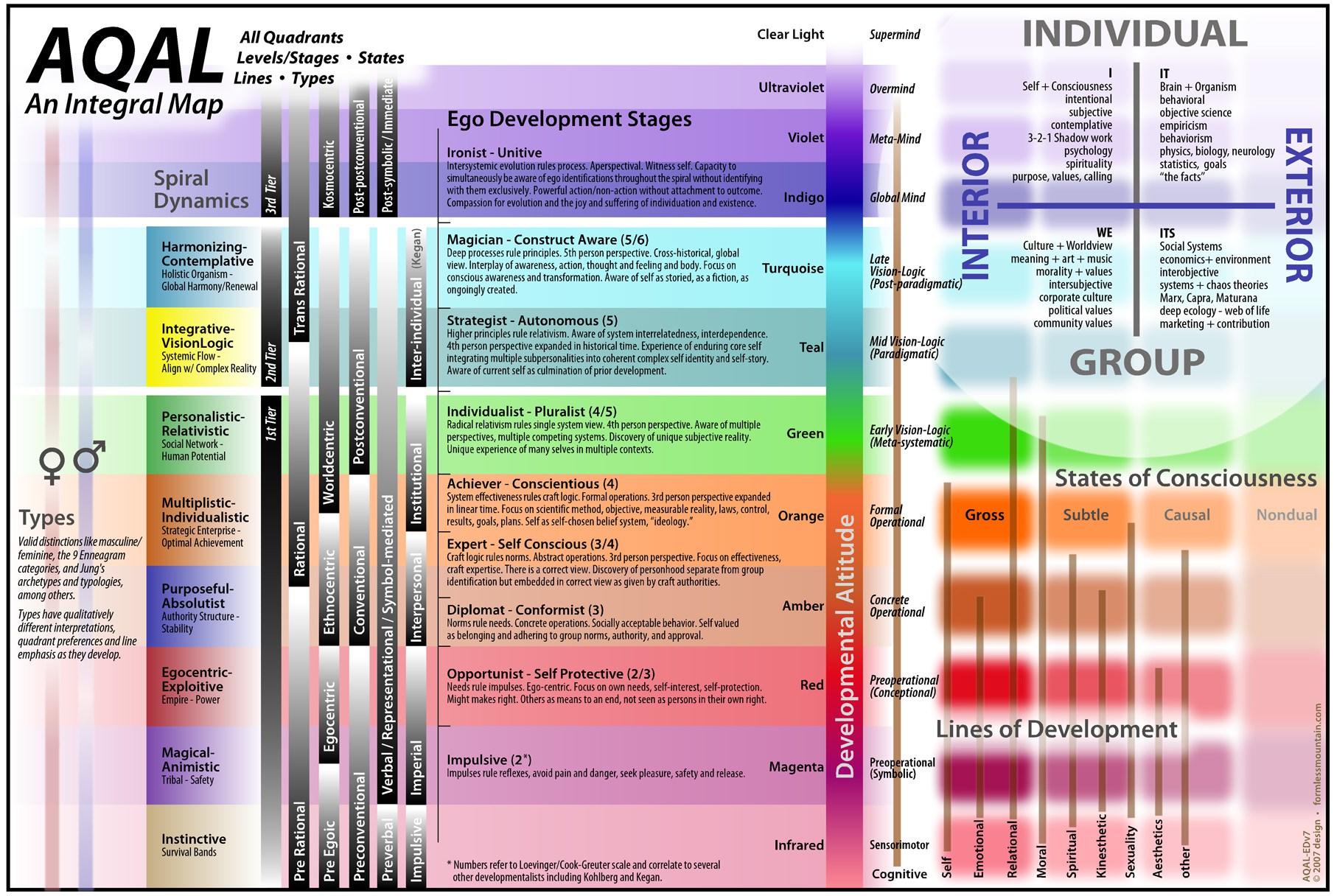
The quadrants also have other big topics connected to them. One is the universal players of evolution, the holons and the 20 tenets that describe them. Out of which the two most commonly mentioned in the integral world is the principle of a healthy stage transition: transcend and include and the description of holarchies as natural hierarchies versus oppressive hierarchies.
A third major topic is the lines of development or multiple intelligences on which we might develop differently. We have around a dozen lines that we use daily and maybe more in all together. One might be more evolved on the cognitive line – thinks smart and complex – and at the same time less evolved on the interpersonal line – having more un-worked-through, unconscious patterns and games in relationships. That explains why certain gurus have weird sexual scandals around them. An important message of Integral Theory is that we are not one stage, but many in different lines, though we have a center of gravity on one of the stages. Also we can be less idealistic and more real with spiritual teachers if we understand and accept the reality of different lines, instead of expecting an all-time high / all-line high guru. It is a frequent projection, which usually leads nowhere else than disillusionment on the long run. In an integral era we need more real, more human and less formal, distanced and authoritative relationships including that with spiritual teachers.
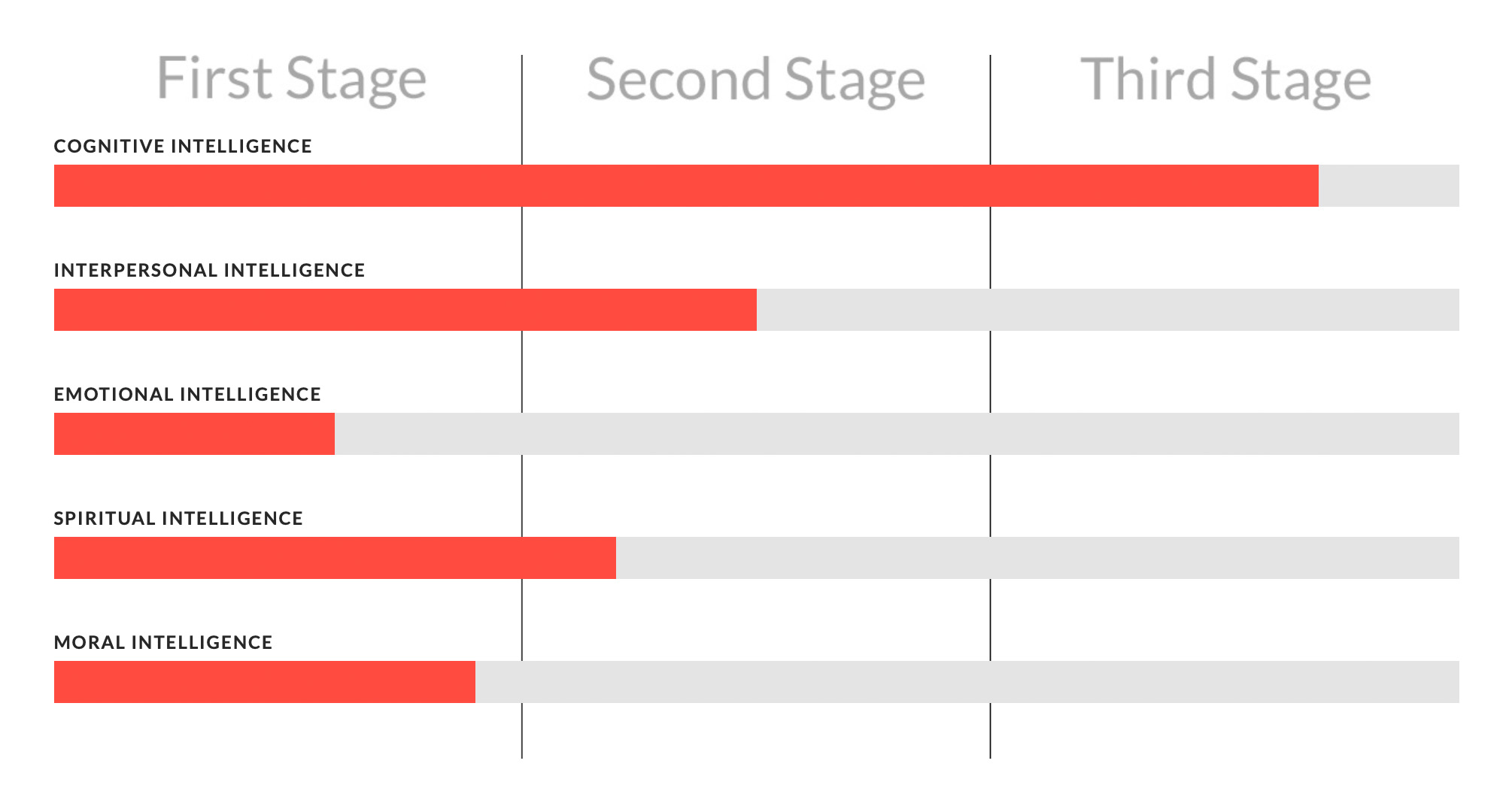
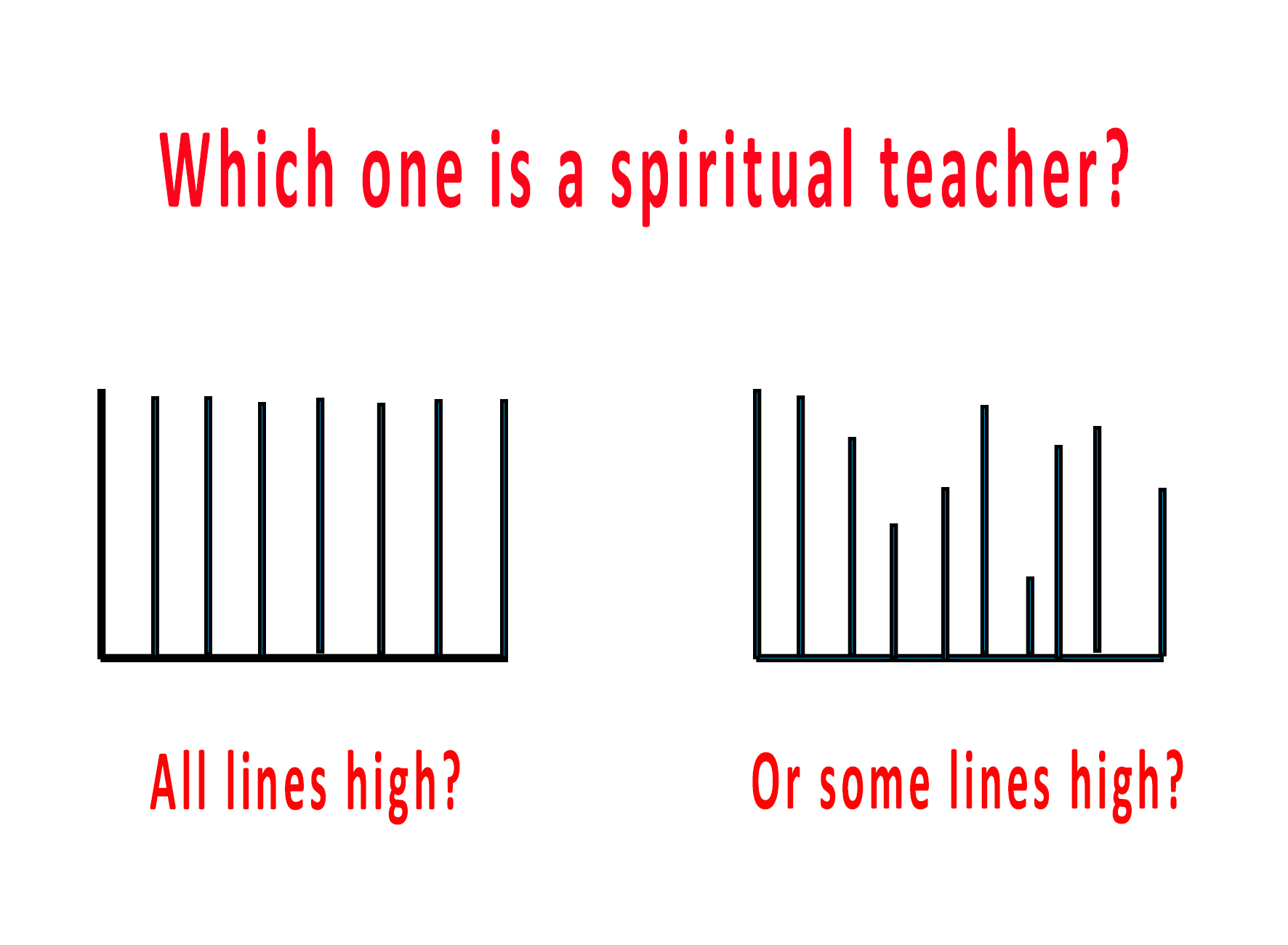
At the 4th, states of consciousness part of Integral Theory Wilber discusses natural states like wake, sleep and dream states but also the awakened states of consciousness and other trained states accessible through refined meditation practice. It is a huge and beautiful topic in itself worth to study.
At the 5th, types part of Integral Theory Wilber discusses the Enneagram and other typologies used in psychology like the Big 5 and Myers-Briggs. A playful and insightful subject, almost a must to have at least a basic knowledge on the Enneagram. Most people in and out the integral world speak in Enneagram types 1 to 9.
1. An Overview of Integral Theory – An All-Inclusive Framework for the 21st Century”
Written by Sean Esbjörn Hargens, at the MetaIntegral Foundation
2. What is Integral Approach? By Integral Life:
https://integrallife.com/what-is-integral-approach/
3. Ken Wilber: Introduction to the Integral Approach
http://www.kenwilber.com/Writings/PDF/IntroductiontotheIntegralApproach_GENERAL_2005_NN.pdf
1. The Brief History of Everything
2. The Religion of Tomorrow
3. Integral Psychology
4. Integral Spirituality
5. Integral Meditation
6. The Atman Project
7. Grace and Grit (in movies by 2020)
